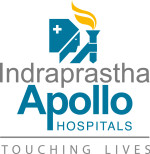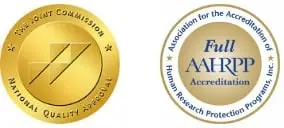Arthroscopy Surgery – FAQs
Arthroscopy is a surgery done to examine a joint visually. Most of the time, it is done on larger joints, like the knee or shoulder. A special tool called an arthroscope is used. It is an instrument that looks like a long tube with a miniature camera on the end. Repairs or corrections to the joint may be done by using the arthroscope and other tools.
It is used to see, diagnose, and treat problems inside your joint.
less than one hour
Anaesthetic
The type of anesthesia will depend on the joint your doctor is looking at. You may receive one of the following:
- General anesthesia -You will be asleep.
- Spinal anesthetic -Your lower body will be numbed by putting a numbing medicine in your back.
The doctor will make tiny incisions in the skin along the joint. Special tools will be inserted through the incisions. The tools include the arthroscope. The picture from the arthroscope will show up on a screen so that the doctor can see the inside of your joint. The doctor will use the images to move around other tools that can cut and repair tissue in your joint.
Complications are rare, but no procedure is completely free of risk. If you are planning to have an arthroscopy, your doctor will review a list of possible complications, which may include:
- Infection
- Blood clots
- Swelling or bleeding
- Damage to blood vessels, nerves, or other tissue
- The need to have another surgery or more extensive surgery
- Pre-existing heart or lung condition
- Smoking
Before Surgery
Week before
A full medical history and physical examination are required prior to surgery. This may be done in the doctor’s office or a medical clearance may be requested from our medical doctor (especially if you have heart, lung, or multiple medical problems).
Most importantly: Do not eat or drink anything after midnight the night before surgery or your surgery will be cancelled. The hospital staff will tell you which of your medications to take the day of surgery (with a SMALL sip of water only).
Day before
Typically the hospital will ask you to arrive about two hours before surgery. The time the surgery actually starts may vary, including on the day of surgery, depending on how long the cases before yours (if any) take. You will be checked in and brought into the pre-operative holding area. An IV will be started and the staff will check your paperwork. You will be asked which joint is the proper joint for surgery and a mark will be placed on that side. Once you are taken back to the operating room, it takes about twenty minutes to get situated. Surgery lasts anywhere from thirty minutes to a couple of hours or so. Don’t be alarmed if surgery takes a bit longer; occasionally additional problems needing treatment are encountered.
After surgery, you’ll spend an hour or so in the recovery room. Your visitors will be informed by telephone after you arrive in the recovery room.
Things to pack
- ALL relevant tests – CT scans, MRIs, ultrasound scans, x-rays, blood and urine tests.
- ALL current medication
After Surgery
Successful postoperative pain management after arthroscopic surgery allows patients to go home earlier, decreases the potential for hospital readmission, and facilitates rehabilitation. Optimal pain control considers the physiological and psychological states of the patient, the resulting alterations due to the surgery, and the technical and economic resources available during recovery. A comprehensive approach to pain control should include preoperative, intraoperative, and postoperative efforts. Efforts at postoperative pain reduction should begin preoperatively with the establishment of an excellent patient/physician Accredited by Joint Commission International India’s First Internationally Accredited Hospital relationship. Preoperative analgesia should be administered. Intraoperative efforts should include the administration of anesthetic medication intra- articularly. Postoperative management should include sleep medication, continuous cold-flow therapy, oral analgesics, and, if necessary, the use of narcotics.
After Discharge
The dressings can sometimes be removed as early as the next morning. When you return home after the procedure, do the following to help ensure a smooth recovery:
- You may apply ice for the first 24 to 48 hours after surgery to help with swelling and pain.
- While resting in bed, elevate the part of your body that you had surgery on.
- Keep the incision area dry for the first 24 hours.
- You may be instructed to use crutches or a cane for the first few days if the surgery was done on a joint in your legs.
- If you have stitches or staples, your doctor will remove them in 10-14 days.
- Be sure to follow your doctor’s instructions.
It takes 4-6 weeks for the joint to recover. You can probably go back to work or resume daily activities within a few days, as long your doctor approves. A specific activity and rehabilitation program may be suggested. This will help speed your recovery and protect future joint function.
Athletes often return to athletic competition within a few weeks.
After arriving home, contact your doctor if any of the following occurs:
- Signs of infection, including fever and chills
- Redness, swelling, increasing pain, excessive bleeding, or any discharge from the incision site
- Nausea and/or vomiting that you cannot control with the medicines you wee given after surgery, or which persist for more than two days after discharge from the hospital
- Pain that you cannot control with the medicines you have been given
- Cough, shortness of breath, or chest pain
- Joint pain, fatigue, stiffness, rash, or other new symptoms
- Swelling, tingling, pain, or numbness in your toes that is not relieved by elevating your knee above heart level for one hour
- Drainage
Your next appointment
You will usually be asked to attend a follow-up appointment within a week after the operation to discuss the results of the surgery, your recovery and any additional treatment that you may require
Repair of the anterior cruciate ligament (ACL) by arthroscope may require a recovery time of 4-6 months and a more specialized rehabilitation program.


